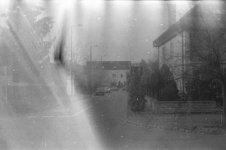Bill Clark
Veteran
Thanks for helping Roland. I just keep it simple and use it mainly for Pan F Plus, Fuji 100 Acros and a few others, exposed at designated ASA. Don't use any 1600 film anymore. I don't use this developing method very often but find it interesting, especially if I have my eyes glued to the TV! It gives me 30 min., then agitate, then 30 min. more!
For me, it's something different to use every so often.
Did a friend request on FB.
Thanks! Have a wonderful week.
For me, it's something different to use every so often.
Did a friend request on FB.
Thanks! Have a wonderful week.


